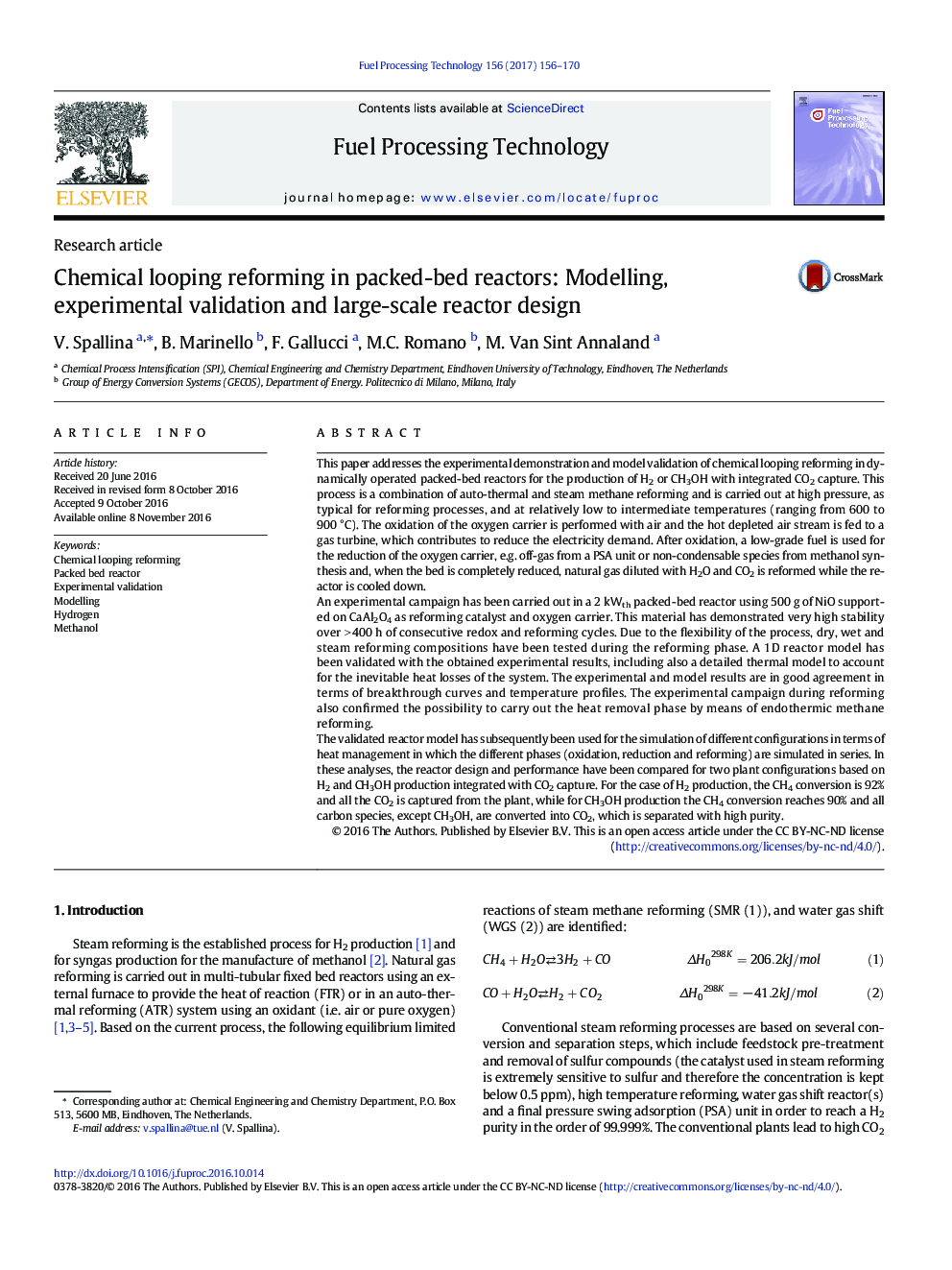| کد مقاله | کد نشریه | سال انتشار | مقاله انگلیسی | نسخه تمام متن |
|---|---|---|---|---|
| 6476611 | 1425390 | 2017 | 15 صفحه PDF | دانلود رایگان |
- Proof of concept of chemical looping reforming in packed bed reactor.
- The model results in very good agreement with the experimental results.
- Low grade fuel is used for the OC reduction instead of natural gas.
- H2 yield equal to 2.74Â molH2/molCH4 with 100% of CCR.
- CH3OH yield of 89% molCH3OH/molCH4 with 100% of CCR.
This paper addresses the experimental demonstration and model validation of chemical looping reforming in dynamically operated packed-bed reactors for the production of H2 or CH3OH with integrated CO2 capture. This process is a combination of auto-thermal and steam methane reforming and is carried out at high pressure, as typical for reforming processes, and at relatively low to intermediate temperatures (ranging from 600 to 900 °C). The oxidation of the oxygen carrier is performed with air and the hot depleted air stream is fed to a gas turbine, which contributes to reduce the electricity demand. After oxidation, a low-grade fuel is used for the reduction of the oxygen carrier, e.g. off-gas from a PSA unit or non-condensable species from methanol synthesis and, when the bed is completely reduced, natural gas diluted with H2O and CO2 is reformed while the reactor is cooled down.An experimental campaign has been carried out in a 2 kWth packed-bed reactor using 500 g of NiO supported on CaAl2O4 as reforming catalyst and oxygen carrier. This material has demonstrated very high stability over > 400 h of consecutive redox and reforming cycles. Due to the flexibility of the process, dry, wet and steam reforming compositions have been tested during the reforming phase. A 1D reactor model has been validated with the obtained experimental results, including also a detailed thermal model to account for the inevitable heat losses of the system. The experimental and model results are in good agreement in terms of breakthrough curves and temperature profiles. The experimental campaign during reforming also confirmed the possibility to carry out the heat removal phase by means of endothermic methane reforming.The validated reactor model has subsequently been used for the simulation of different configurations in terms of heat management in which the different phases (oxidation, reduction and reforming) are simulated in series. In these analyses, the reactor design and performance have been compared for two plant configurations based on H2 and CH3OH production integrated with CO2 capture. For the case of H2 production, the CH4 conversion is 92% and all the CO2 is captured from the plant, while for CH3OH production the CH4 conversion reaches 90% and all carbon species, except CH3OH, are converted into CO2, which is separated with high purity.
242
Journal: Fuel Processing Technology - Volume 156, February 2017, Pages 156-170
